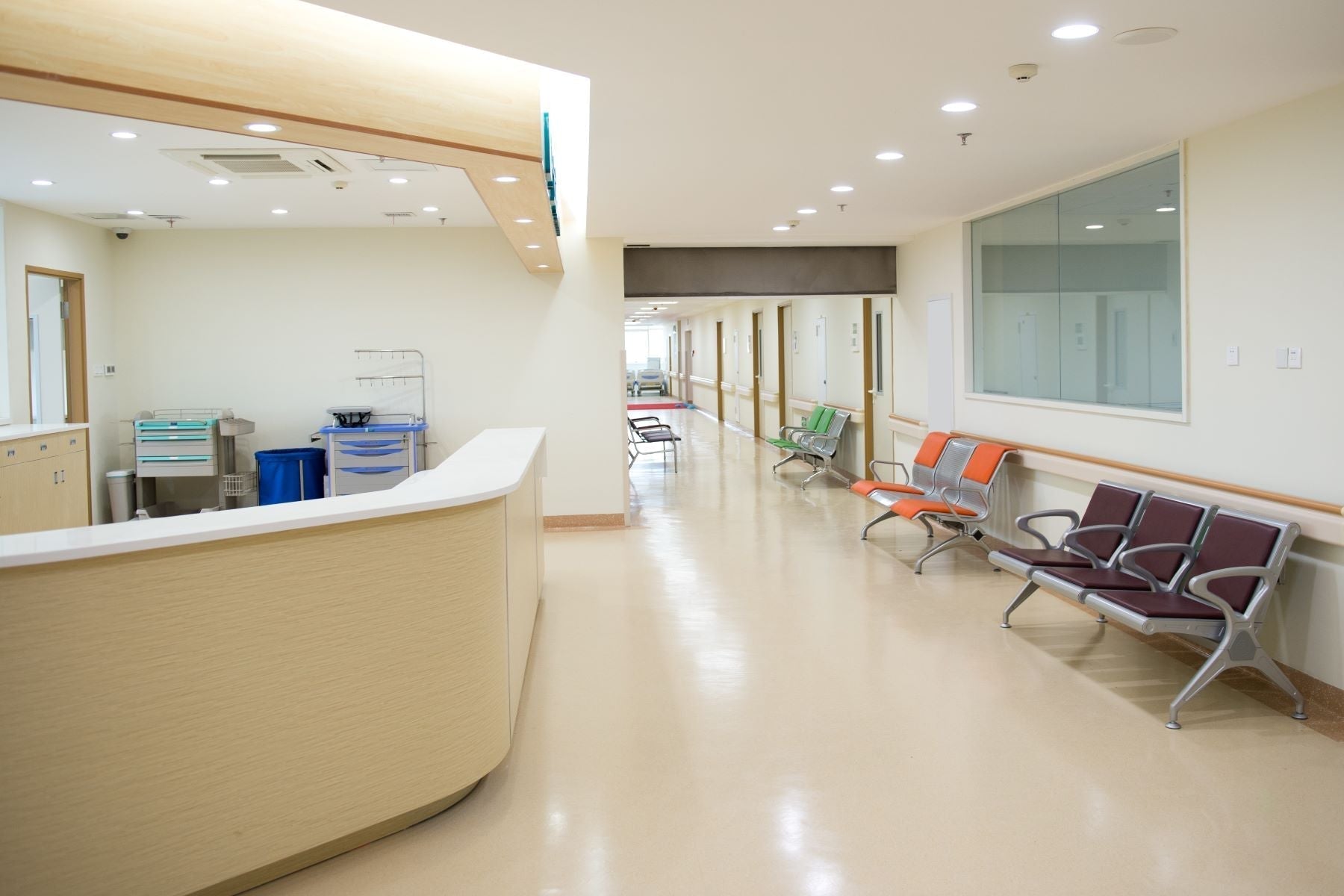By TJ Grim, Ready 2 Respond Trainer
Water damage is disruptive in any facility – but in healthcare, the consequences can be especially severe. Hospitals, outpatient clinics, and labs can’t simply shut down until the problem is fixed. A leak in an operating room can mean delayed surgeries, while a burst pipe in a lab could destroy valuable equipment and compromise patient services. Even minor incidents can have a ripple effect – impacting staff, patients, and the broader community.
Through Ready 2 Respond® (R2R) assessments across hospitals and outpatient centers, several recurring challenges have surfaced. These lessons from the field highlight where healthcare organizations can take practical steps to strengthen preparedness and reduce risk.
1. Infrastructure Under Pressure
Healthcare facilities are rarely uniform. A single system may include a flagship hospital built decades ago, newer outpatient centers and emergency rooms, and a mix of specialized labs or clinics. That patchwork means vulnerabilities vary widely.
Common issues include roof leaks, burst pipes, freeze-ups, condensation, and HVAC failures. Multi-floor incidents are especially challenging, with water traveling through ceilings and walls before it’s even detected. And because hospitals never close, even routine wear and tear can escalate into major events if not addressed quickly.
R2R insight: Infrastructure issues are inevitable, but proactive planning can minimize impact. Regular assessments, clear shut-off maps, and preventive maintenance keep facilities one step ahead of catastrophic failures.
2. Critical Spaces, Critical Consequences
When water enters an operating room or lab, the disruption is immediate. These areas generate significant revenue, but more importantly, they directly support patient care. Even brief interruptions can derail schedules, delay procedures, and harm the facility’s reputation.
Healthcare facilities face unique challenges: equipment exposed to water often requires disinfection or recertification before reuse, and microbial growth poses significant health risks. With no option to “close for the weekend,” hospitals must stay operational around the clock.
R2R insight: A trained in-house team that can respond immediately – not hours later when a contractor arrives – is the best safeguard for minimizing downtime and protecting critical spaces. Such a team should deploy commercial-grade air scrubbers to minimize any safety and cross-contamination risks.
3. Training Gaps that Delay Effective Response
In many assessments, frontline team members often lacked the necessary training or tools to handle water damage effectively. Common issues included:
- Insufficient guidance on safety hazards that may be present due to flooding.
- Uncertainty about the different categories of water (clean, gray, black), the health risks each poses, and the safety precautions to take for each.
- Reliance on sight or touch rather than moisture meters for determining if surfaces are dry, which can lead to incomplete drying, additional damage, and even mold.
- Missing or incomplete written safety guidance and standard operating procedures (SOPs).
- Inadequate professional air filtration, extraction, and drying equipment, and training in how to use it properly,
One of the most critical gaps is decision-making. Without a clear understanding of water categories, facilities teams don’t always know when it’s safe to manage a problem in-house and when to call in a contractor. That uncertainty can lead to hesitation and delayed action, unnecessary expenses, or exposure to health risks and cross-contamination.
These gaps undermine recovery, create safety hazards, and force facilities to depend heavily on outside remediation companies. Yet first responder teams that include HVAC technicians and environmental services teams are capable of mitigating small, clean water losses – with many team members eager to learn.
R2R insight: Regular first responder training, paired with written protocols and accessible checklists, empowers teams and builds confidence and consistency.
4. Logistical Roadblocks to a Fast Response
Even when teams know what to do, they can be slowed by disorganization or limited resources. In some facilities, equipment is scattered across buildings or buried in storage areas. At one health system, storage was so limited that maintenance team members had to drive between outpatient centers with shop vacs in their personal vehicles to keep up with emergencies.
Also, many hospitals or clinics may lack access to enough professional-grade equipment, including water extractors, air scrubbers, air movers, and dehumidifiers. In those situations, team members often end up “making do” with floor scrubbers, box fans, or consumer-grade dehumidifiers, if any – tools that may provide temporary relief but aren’t powerful enough for the job, frequently leaving excess moisture behind and increasing the risk of secondary damage.
Equipment tracking is often a problem, making it difficult for first responders to locate and access equipment and tools quickly during an incident.
R2R insight: Streamlined logistics make all the difference. Staging professional-grade kits in strategic areas, centralizing mobile resources in cargo trailers, and using tracking systems ensure teams can respond quickly and consistently.
Building Resilience in a 24/7 Environment
Water damage doesn’t wait for business hours – and in healthcare, there are no down days. That’s why hospitals and health systems must plan ahead. By training and equipping the team and organizing resources, facilities leaders can strengthen resilience against one of the most common and costly facility risks.
The lessons from these frontline assessments are clear: facilities that take steps now will be better prepared to recover quickly, safeguard patient care, and protect valuable equipment when water damage strikes.
Contact the R2R team for assistance with a customized response plan that includes assessment and training. For facility management tips, follow us on LinkedIn and subscribe to our Facility Insights newsletter.


Moisture Meters: Small Tools that Prevent Big Problems
Drying Equipment Placement: Common Mistakes to Avoid